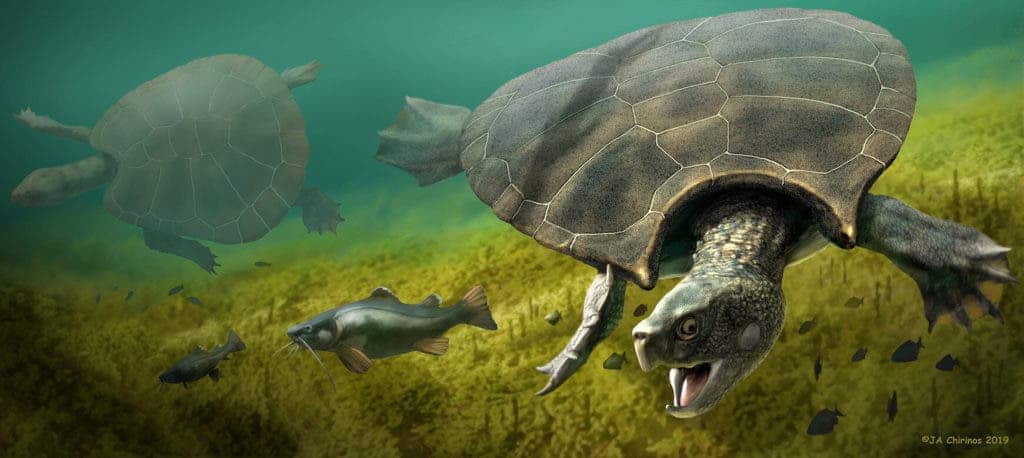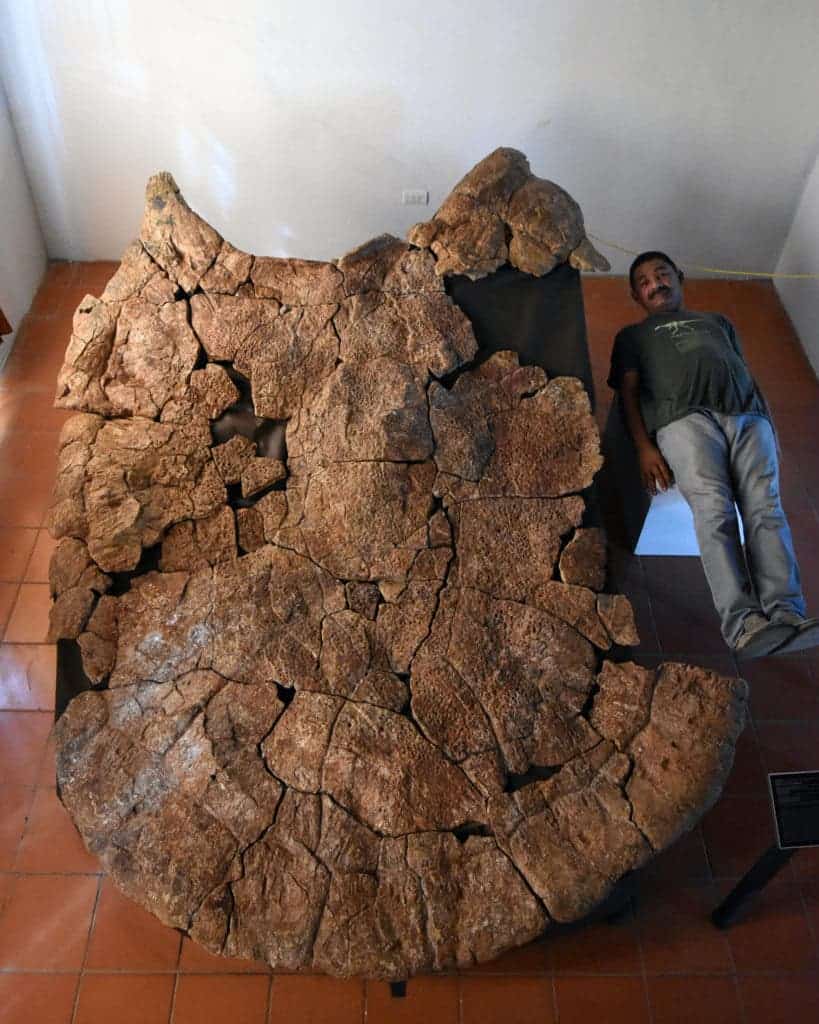
South America’s tropical region is home to one of the world’s most biodiverse hotspots. But, this isn’t anything new. For millions of years, the South American rainforest has fostered unique fauna, including some of the most amazing extinct giant rodents and crocodilians, including crocodiles, alligators, caimans, and gavials. In a new study, researchers have enriched the continents’ mega-fauna, after they described an extinct freshwater turtle that may quite possibly be the largest to ever have lived.
It lived 13 million to 7 million years ago alongside frightening giant crocodilians
The extinct freshwater turtle called Stupendemys geographicus inhabited an area that today is a desert in Venezuela. Five to ten million years ago, however, this was a humid swampy region that was teeming with all kinds of life.
Stupendemys was first discovered in the mid-1970s, but an international team of researchers from Colombia, Venezuela, Brazil, and Switzerland, has now reported exceptionally well-preserved specimens of the extinct turtle — in the process — and we now know that this turtle was much more interesting than initially thought.

For one, Stupendemys was huge. Its carapace was almost three meters long, making it one of the largest, if not the largest turtle that ever existed. Scientists estimate that the turtle could weigh as much as 1,145 kg — that’s almost 100 times more than its closest living relative, the big-headed Amazon river turtle (Peltocephalus dumerilianus).
Interestingly, some individuals exhibited an unexpected feature: horns on the carapace. Upon closer inspection, the researchers determined that the horns on the shell only appeared in males. This is the first time that sexual dimorphism in the form of horned shells has been reported in any side-necked turtle (any species of turtle belonging to the families Chelidae, Pelomedusidae, and Podocnemididae).
“The two shell types indicate that two sexes of Stupendemys existed—males with horned shells, and females with hornless shells,” says Marcelo Sánchez, director of the Paleontological Institute and Museum of the University of Zurich.
Despite its enormous size, Stupendemys wasn’t safe in the Venezuelan swamps. The giant turtle shared its habitat with Purussaurus brasiliensis, the largest caiman that ever lived, which grew to 12.5 meters in length, weighed around 8.4 metric tons, and required a mean daily food intake of 40.6 kg. Bite marks and punctured bones in fossil carapaces of Stupendemys support the notion that the turtle was subjected to predation.
Newly described jaws and partial skeletons belonging to Stupendemys also proved essential at revising its position in the evolutionary family tree, suggesting that some living turtles from the Amazon are its closest living relatives. The study published in the journal Science Advances also determined that the giant extinct turtle’s range extended across the entire northern part of South America, based on fossils retrieved from Brazil, Columbia, and Venezuela.


